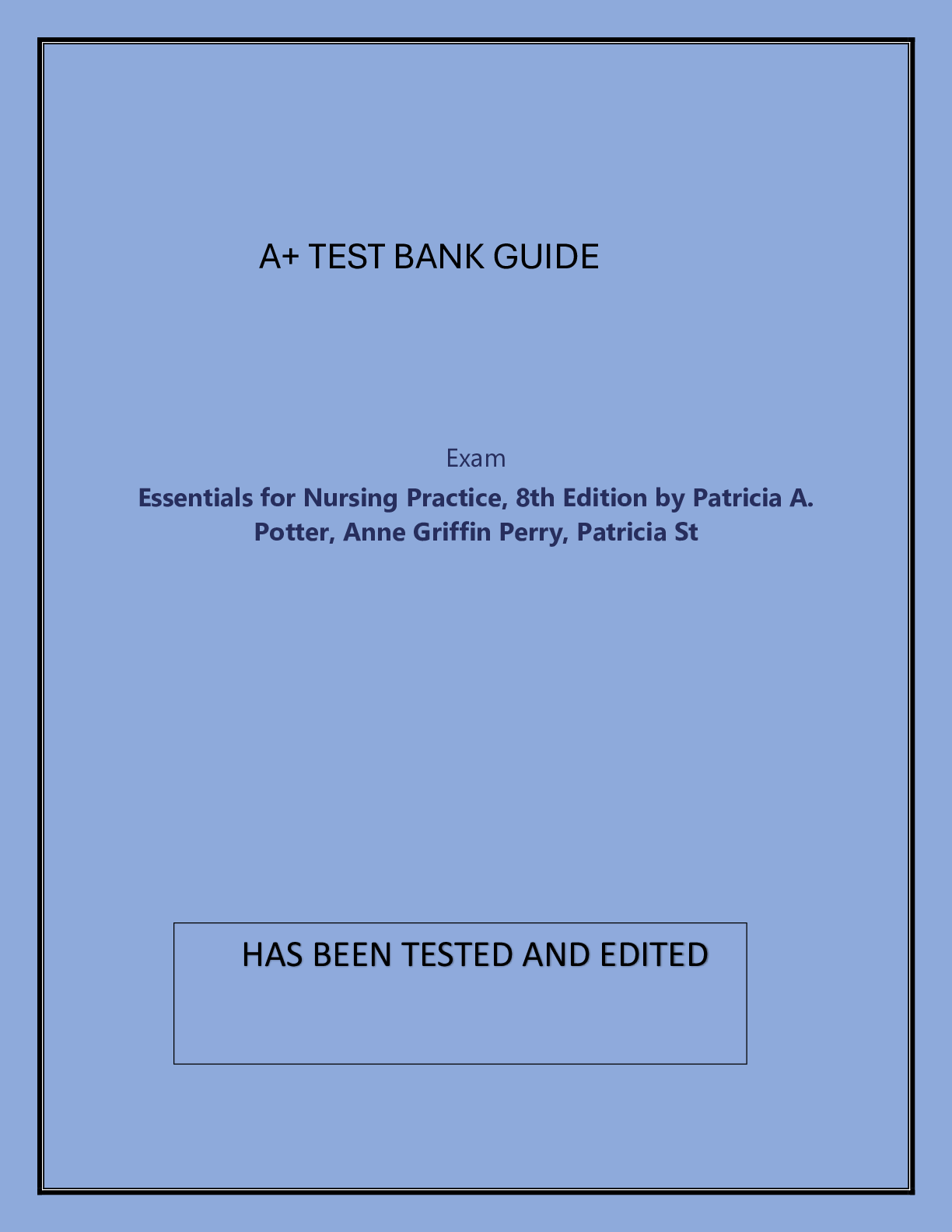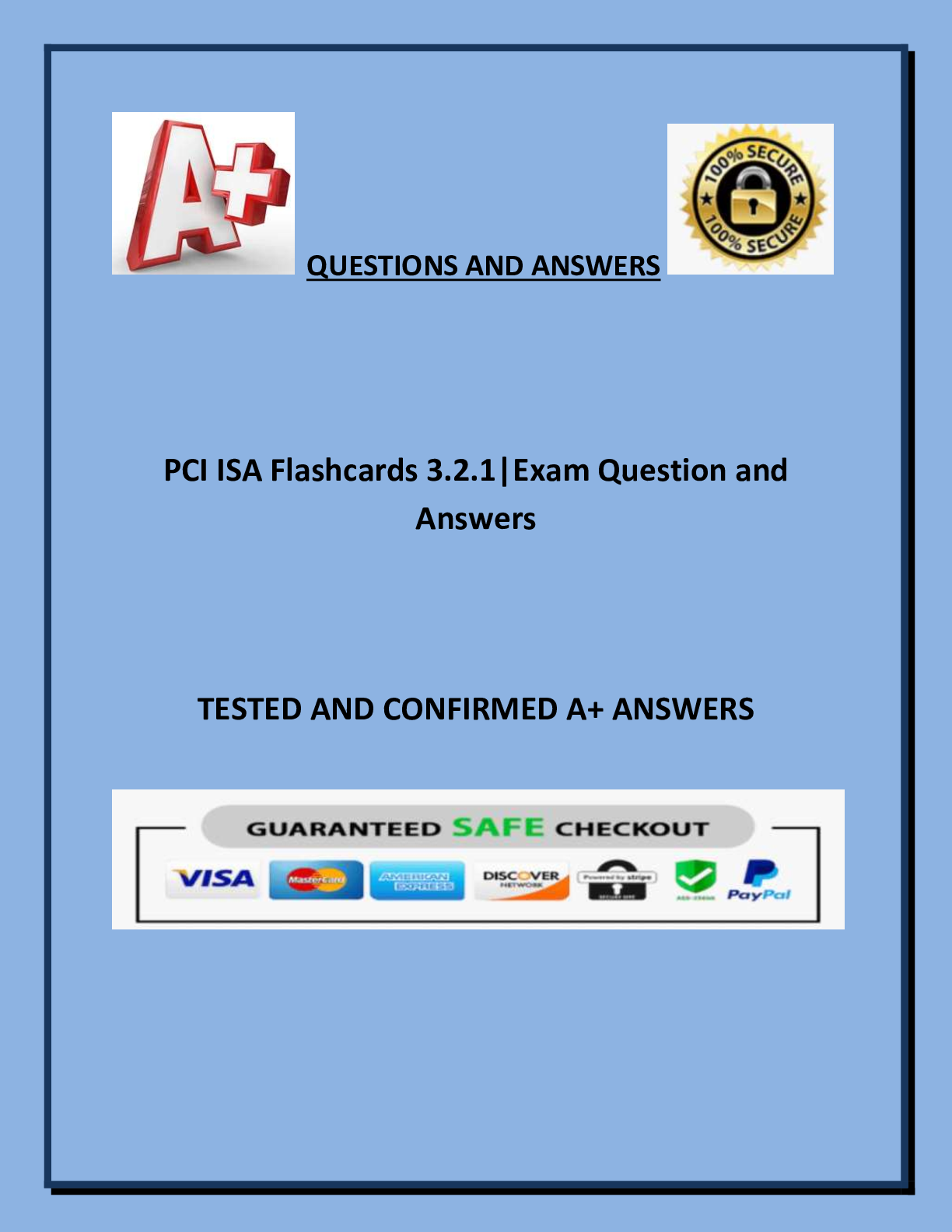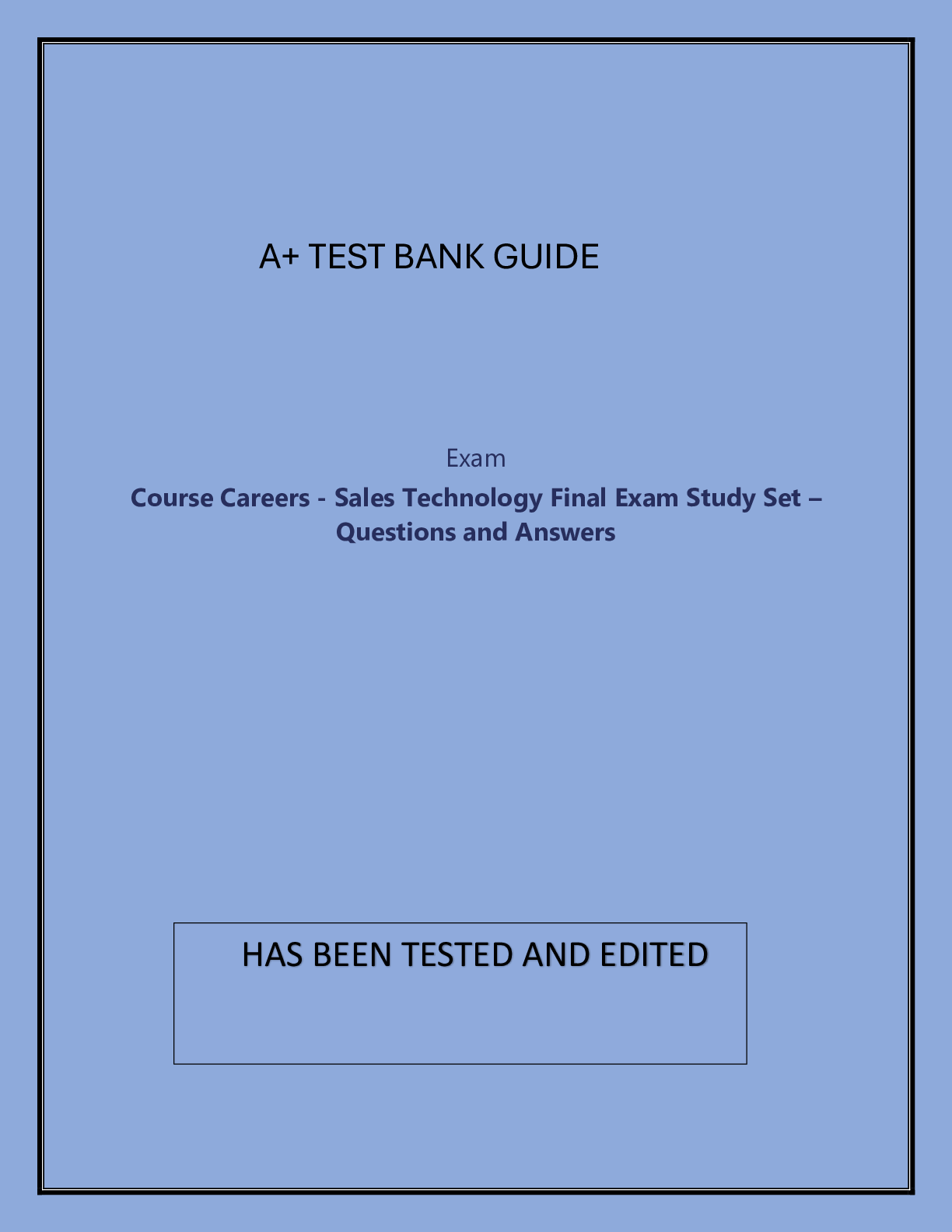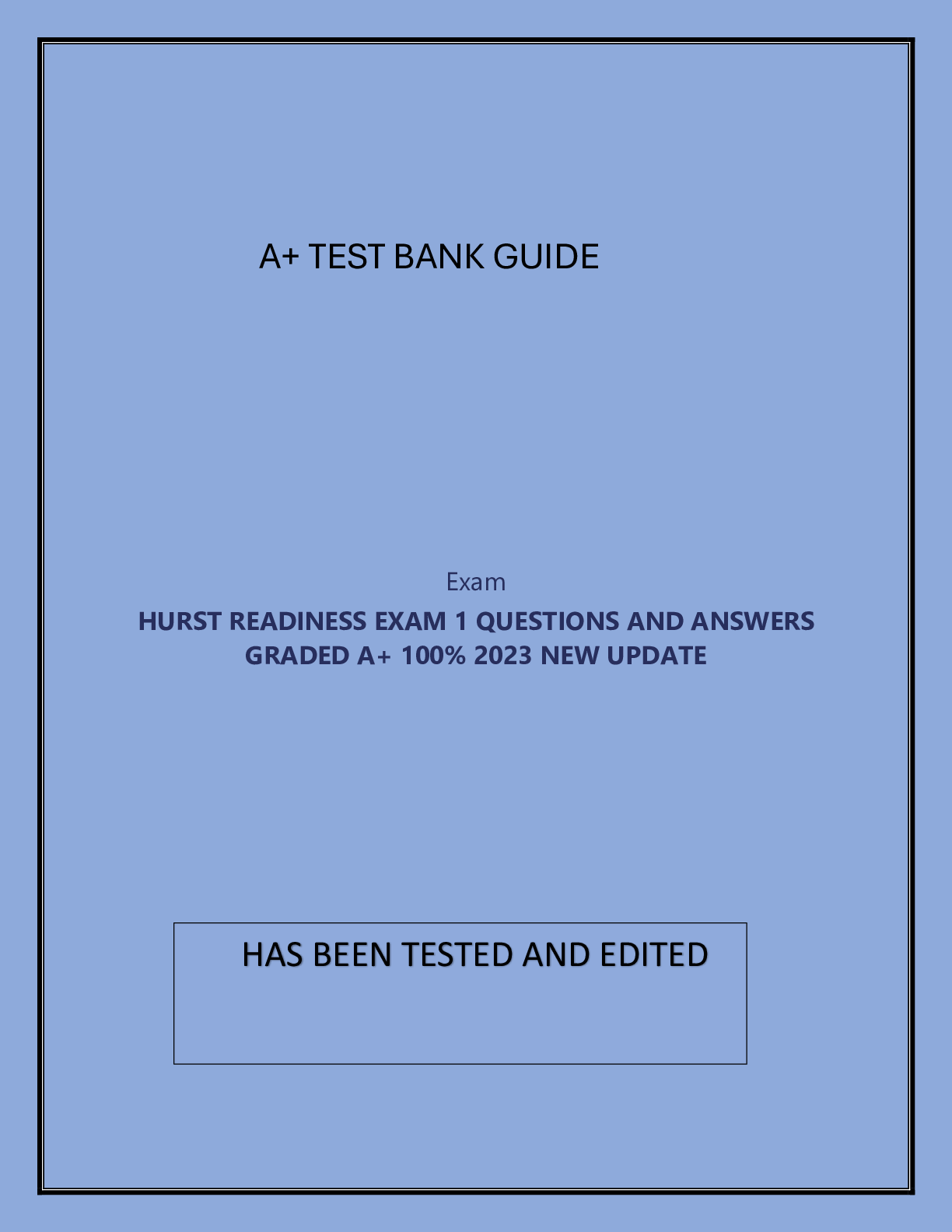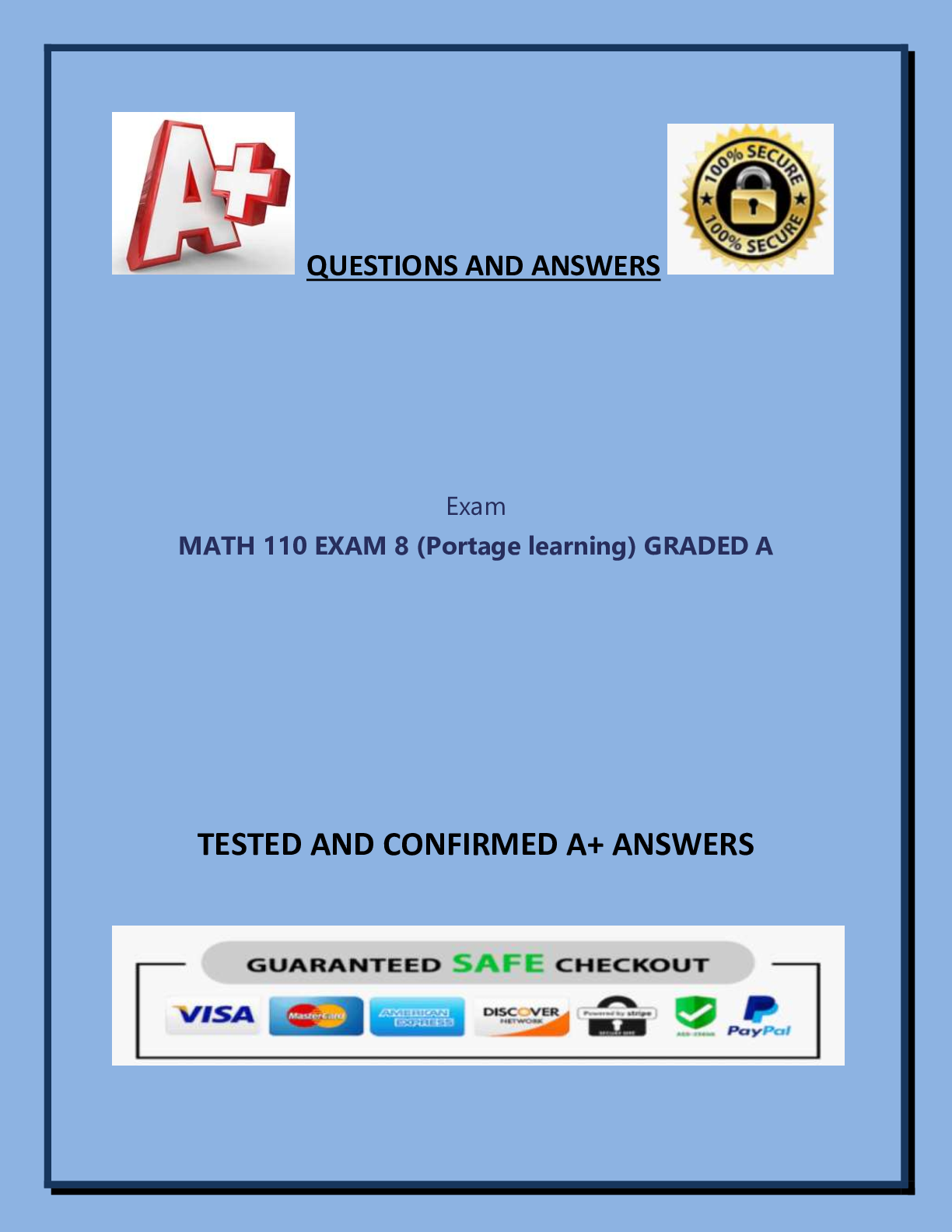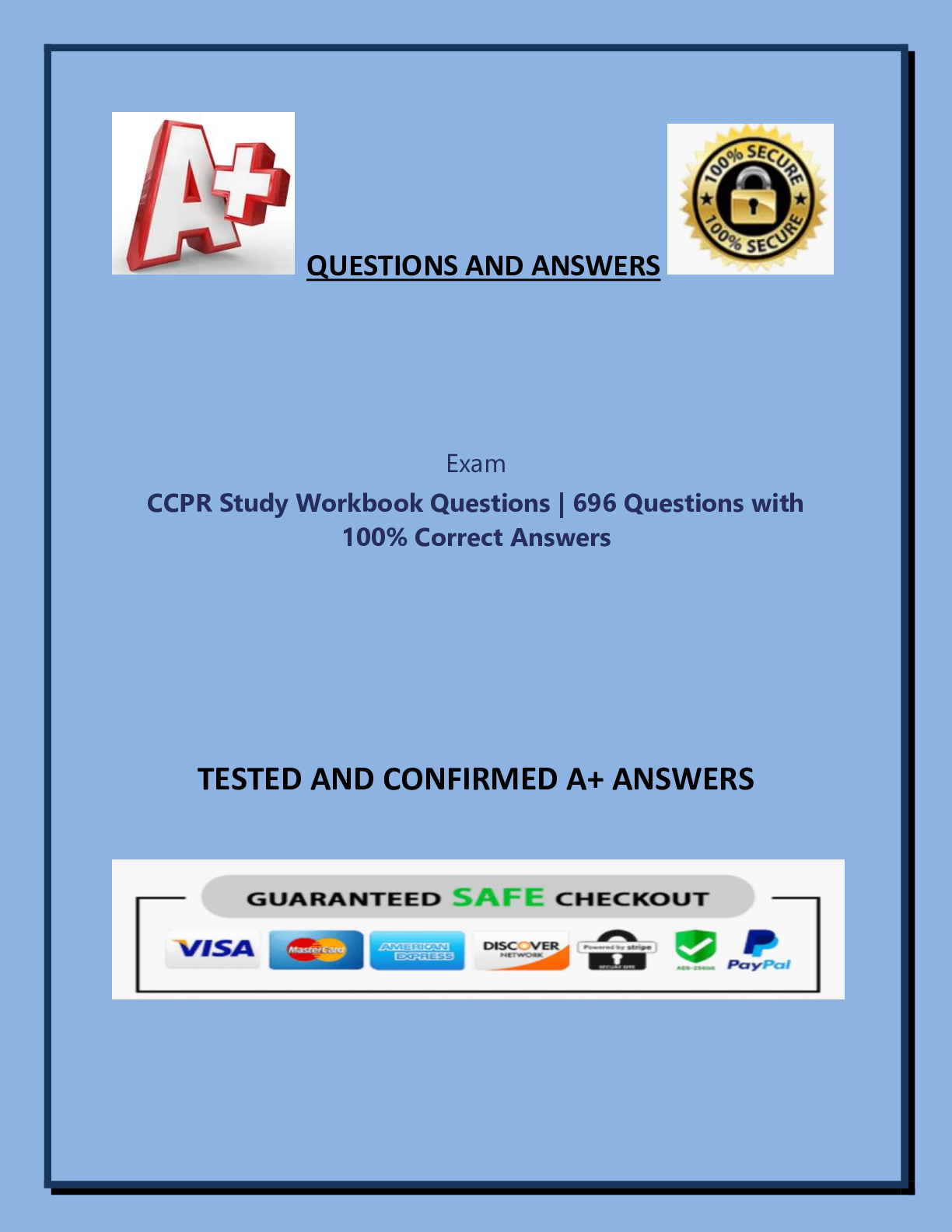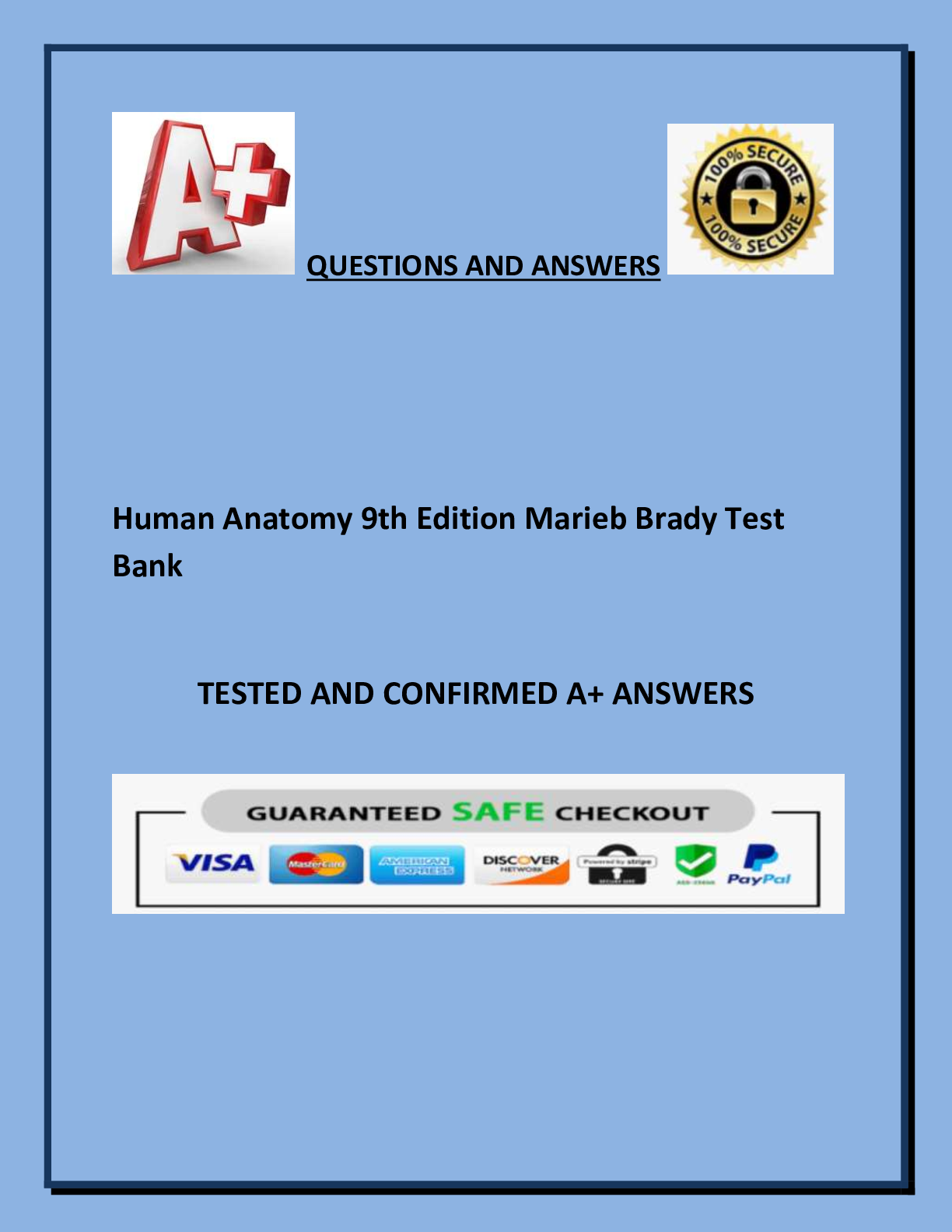*NURSING > A-Level Question Paper > Movement disorders and dementia syndromes – 13 questions (All)
Movement disorders and dementia syndromes – 13 questions
Document Content and Description Below
Movement disorders and dementia syndromes – 13 questions ● Discussthe pathology and pathophysiology of Parkinson’s Disease, Huntington’s Disease, and Alzheimer’s Disease. o Parkinson’... s Disease ■ Complex motor disorder accompanied by systemic nonmotor and neurologic symptoms ■ The main disease feature is degeneration of the basal ganglia (corpus striatum, globus pallidus,subthalamic nucleus, and substantia nigra) involving the dopaminergic nigrostriatal pathway ■ Pathophysiology: The hallmark pathologic features of PD are loss of dopaminergic pigmented neurons in the substantia nigra (SN) pars compacta with dopaminergic deficiency in the putamen portion of the striatum Dopamine loss in other brain areas including the brain stem, thalamus, and cortex also occurs Degeneration of the dopaminergic nigrostriatal pathway to the basal ganglia resultsin underactivity of the direct motor pathway (normally facilitates movement) and overactivity of the indirect motor loop (normally inhibits movement) ● Thisresults in inhibition of the motor cortex manifested with bradykinesia and rigidity The subthalamic nucleus(STN) overactivity also influencesthe limbic system, accounting for emotional signs and symptoms Neuronal loss within the cerebral cortex is found in half of individuals with PD Lewy bodies, fibrillar intracellular eosinophilic inclusions, and high concentrations of alpha-synuclein, ubiquitin, tau protein, tuberculin, and other proteins are found in the substania nigra, locus coeruleus, and other areas of the brain they are a marker for neuronal degeneration Molecular eventsthought to be associated with neurodegeneration of PD include: ● Mitochondrial dysfunction ● Oxidative stress ● Abnormal folding and accumulation of alpha-synuclein ● Abnormal phosphorylation ● Dysfunction of the ubiquitin proteasome system (regulatesintracellular protein processing) o Huntington’s Disease ■ Also known as chorea is a relatedly rare autosomal dominant disease with high penetrance ■ The onset of HD is usually between 25-45 years of age ■ Pathophysiology: The genetic defect of HD is on the short arm of chromosome 4 ● There is an abnormally long polyglutamine tract in the huntingtin (htt) protein that is toxic to neurons and is cause by a cytosine-adenine-guanine (CAG) trinucleotide repeat expansion (40 to 70 repeats instead of the normal 9-34) ● Age of onset is related to the length of the repeat sequences and mechanism of toxicity ● Repeat lengths greater than 60 cause the juvenile form of the disease The principle pathologic feature of HD issevere degeneration of the basal ganglia (striatum), particularly the caudate and putamen nuclei and the frontal cerebral cortex ● The degeneration of the basal ganglia leaves enlarged lateral ventricles(box car ventricles) Expression of the huntingtin gene produces tangles of protein that collect in the brain cells and chains of glutamine on the abnormal molecules that adhere to each other The mechanism of neuronal death is unknown The excitotoxic theory ofstriatal and cortical degeneration proposesthat the mutated huntingtin protein produces excitotoxic pathways mediated by glutamate function that also induce concomitant dysregulation of dopaminergic function The huntingtin protein also may alter mitochondrial function, which in turn activates apoptotic pathways and causes neuronal death. Neurotrophic factors also may be depleted, leading to loss of neurons Basal ganglia and nigral depletion of GABA isthe principle biochemical alteration in HD [Show More]
Last updated: 1 year ago
Preview 1 out of 23 pages
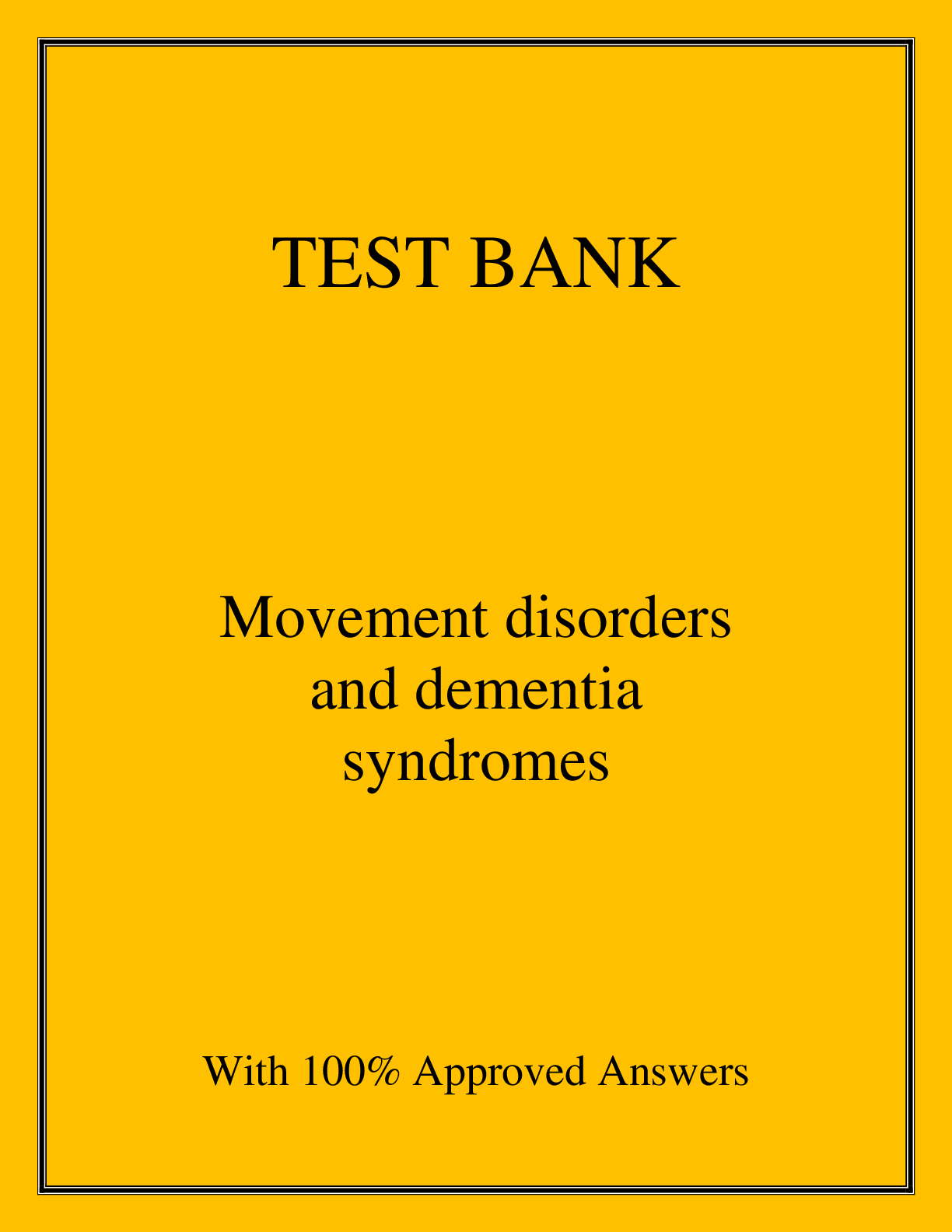
Buy this document to get the full access instantly
Instant Download Access after purchase
Buy NowInstant download
We Accept:

Reviews( 0 )
$19.00
Can't find what you want? Try our AI powered Search
Document information
Connected school, study & course
About the document
Uploaded On
Oct 26, 2023
Number of pages
23
Written in
Additional information
This document has been written for:
Uploaded
Oct 26, 2023
Downloads
0
Views
38

